Spices are a rather moody inhabitant of the kitchen. In addition to the fact that they must be strictly dosed when added to dishes, they must be carefully selected, they must also be stored correctly. The functional shelves will help you easily organize the storage space for your spices. We used to say how to store vegetables, this time we'll talk about seasonings.
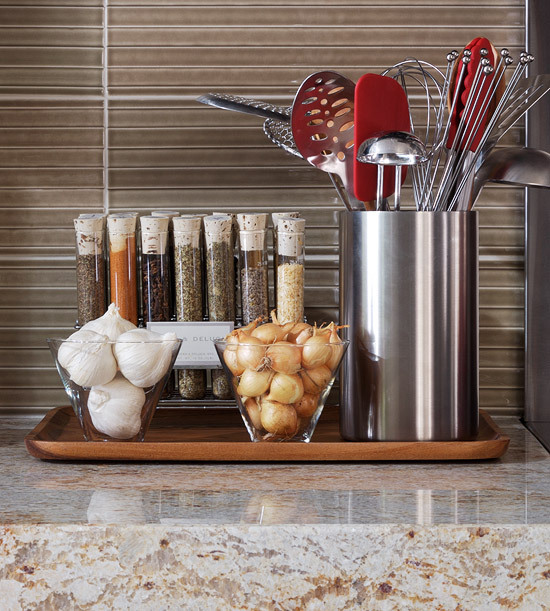
How to store spices correctly
There are several rules for storing spices. They are simple, but you must follow them in order to preserve the freshness of the seasonings for a long time.
Attention! Earned on our website kitchen designer. You can familiarize yourself with it and design your dream kitchen for free! May also come in handy wardrobes designer.

- Never store them in very warm places - near a radiator or near a stove, so as not to stretch too far. The heat from batteries and stove is bad for the seasonings, shortening their shelf life. The sun's rays also do not improve the taste. It is best to put them in a cool, dark place. Humidity is also bad for the spices, so make sure that they are in a dry place, and moisture does not get there.
- For best preservation, buy spices whole and grind them right before use. This is much more convenient than storing spices that have already been ground immediately, since it is necessary to add whole spices to some dishes, as well as to marinades. Spices such as sesame and poppy seeds love the cold, so it is advised to freeze them.
- We do not recommend pouring spices into a hot dish directly from the bag - steam may get into the package, which will affect the acceleration of product spoilage. It will be easier and more convenient to pour the seasoning with a dry spoon.
- It is best to store your spices in glass or ceramic jars with airtight lids. For convenience, you can sign each of them. Some manufacturers produce jars with already allocated signature spaces. Glass flasks and test tubes are popular - they can be used to turn a kitchen into a personal laboratory. But remember that the tubes are modest in size. Therefore, if you really want to use this particular solution for storing spices, take care of additional storage space in advance.
- Also, ground spices are stored less than whole ones - about 7 months versus several years, so it is worth checking the suitability of the products every 2-3 months and getting rid of spoiled ones.
Approximate shelf life of aromatic products:
- whole roots and seeds: 3-4 years;
- berries, nuts, roots: 2-3 years;
- herbs, leaves: 1-2 years;
- ground spices: from 1 month to 1 year, depending on storage conditions and original form. For example, ground root crops are stored for no more than 2 years, and leaves and seeds for no more than a year.
It is also worth remembering that ONLY as a whole, the following spices retain their spicy aroma: coriander, cumin, all kinds of pepper.
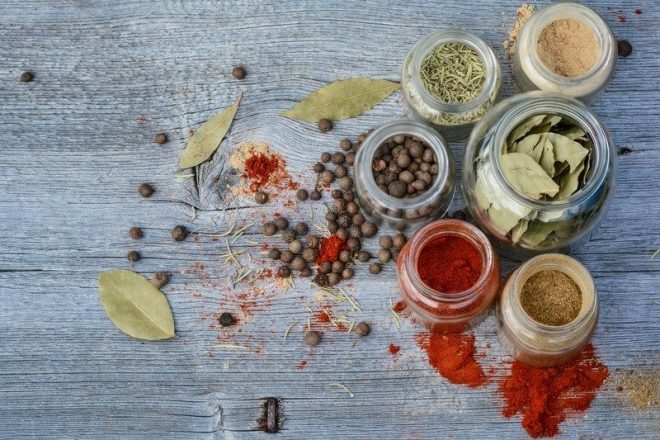
How to understand that seasonings have lost their properties and are no longer suitable for adding to dishes?
- Change in aroma - in spoiled spices, the smell disappears completely or changes significantly.
- Changes in taste - taste the seasonings carefully, even a slight change indicates product spoilage.
- Fading - spoiled foods darken or fade altogether - this is a clear sign of spoilage.
- The appearance of mold or dampness - with these signs, in no case use seasonings, they can harm your health.
Types of spice shelves
There are many types of spice storage shelves. The choice depends only on the configuration of the kitchen and your own preferences.
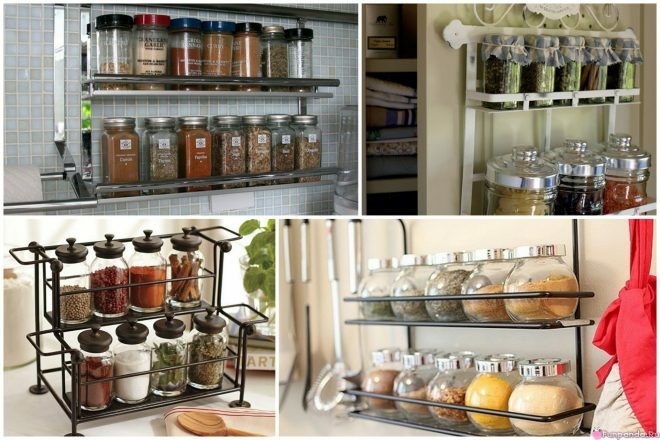
Shelves on walls and doors
Such shelves are not only as functional as possible, they can also emphasize the interior of the kitchen. There are special stoppers for such shelves.

There are many materials from which the stand can be made, but the most reliable are wood, metal and plastic, but the latter is less popular due to its insufficiently solid appearance. Shelves can be bought in stores (sometimes they are sold immediately in a set), or you can do it yourself.
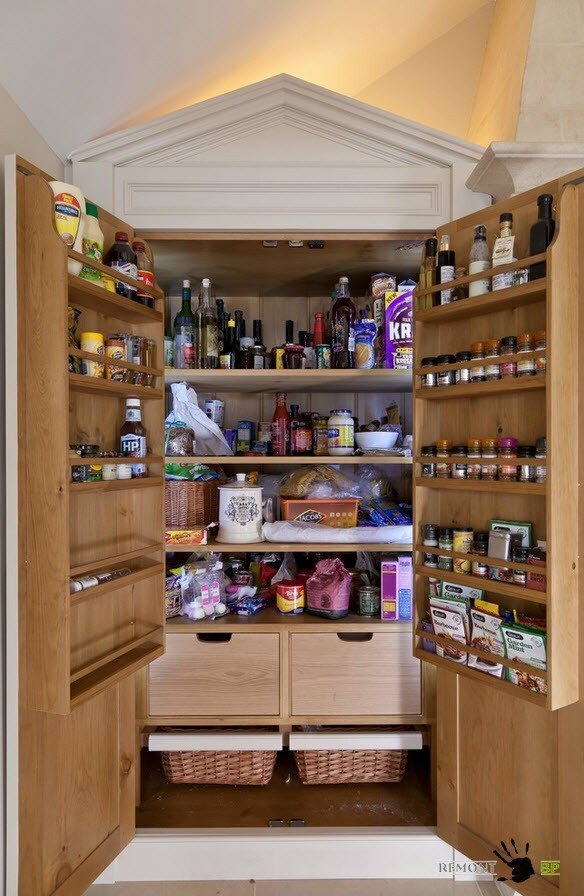
Spice storage modules
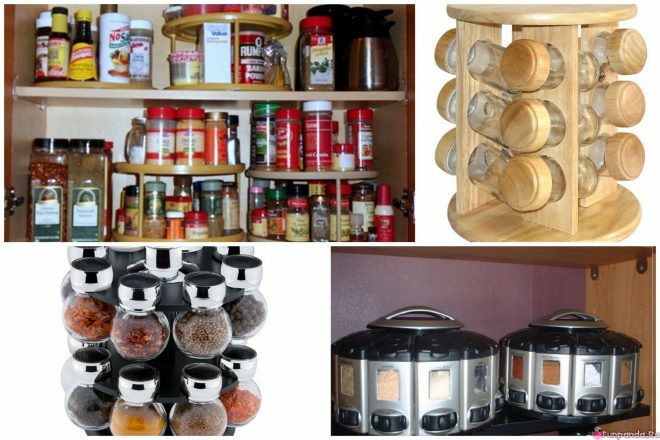
What's this? These are special systems designed to store condiments. Such an original design is good in that it looks as impressive as possible in a modern kitchen and is undeniably convenient when organizing a place for seasonings. The organizer is usually made of durable and high quality material, and the storage jars themselves are made of glass. The only drawback is the high price, but it is worth noting that many housewives, in comparison with other solutions for seasoning, choose these modules.

Magnetic boards
Quite an original way of storing aromatic products. Magnetic boards are sold in a set with beautiful and convenient jars. Made of stainless steel.
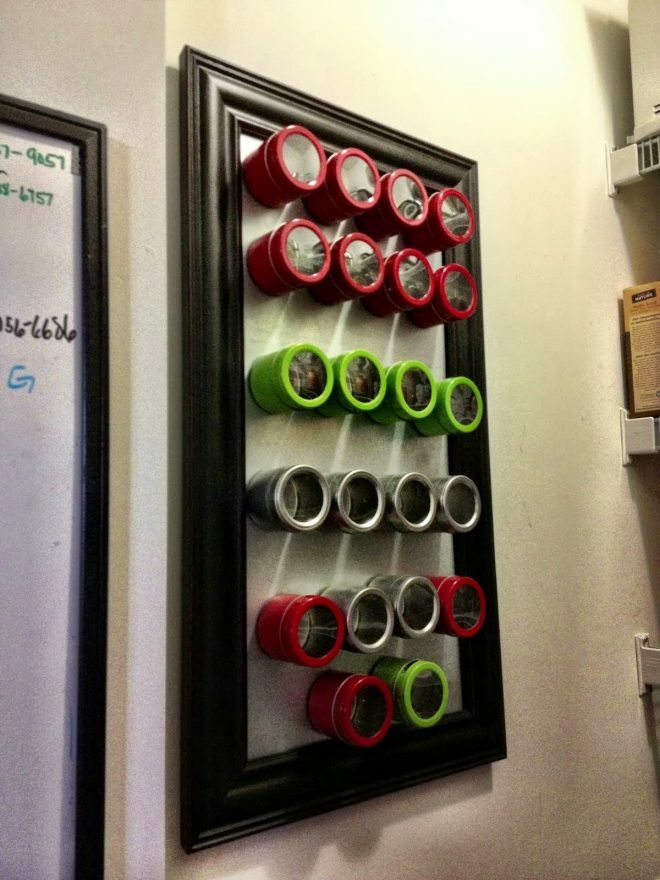
Boards can be attached to any surface - horizontal or vertical, as you like - on kitchen walls, doors, surfaces and cabinet bottoms. These shelves look unusual and accentuate the kitchen, decorated in the spirit of minimalism.
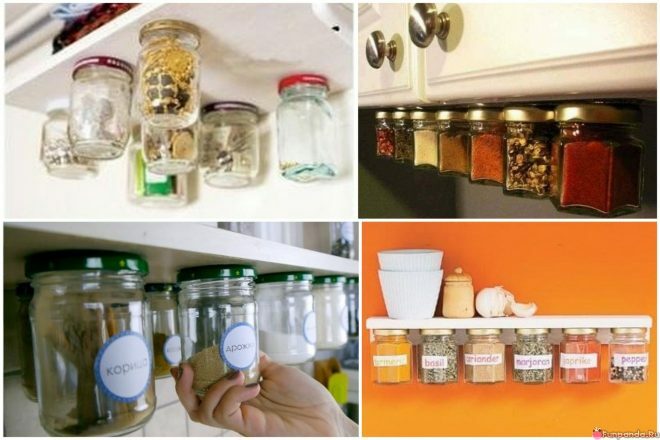
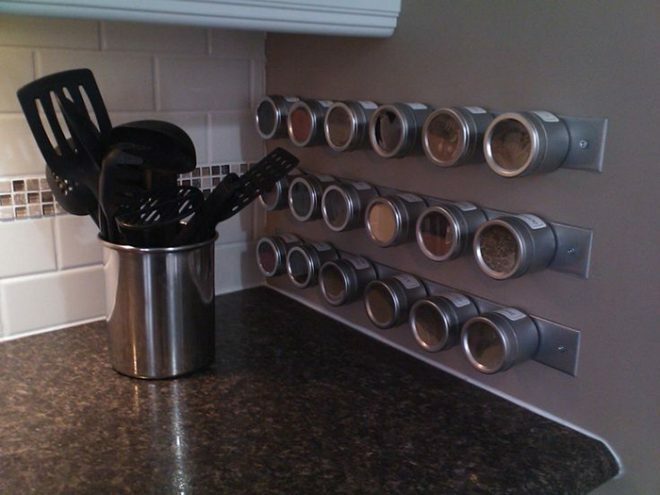
Railing system
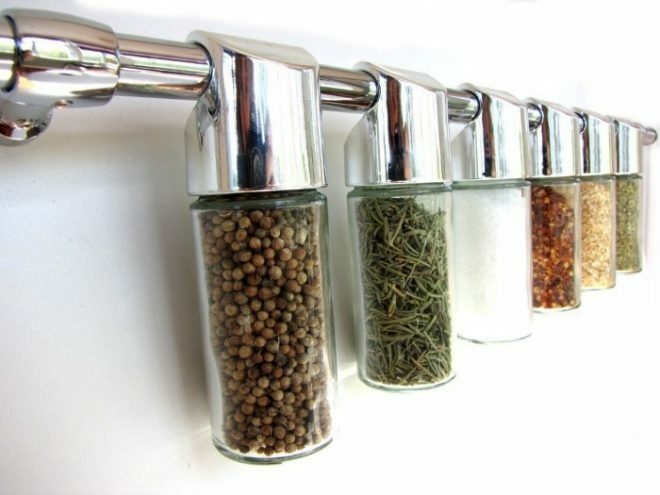
Railing is a wall-mounted metal structure designed not only for spices, but also for various kitchen utensils. Can be in the form of removable shelves or elements held on to a metal bar. It comes in different forms (the shape depends on the manufacturer's imagination), sold separately or in a ready-made set with spice jars.
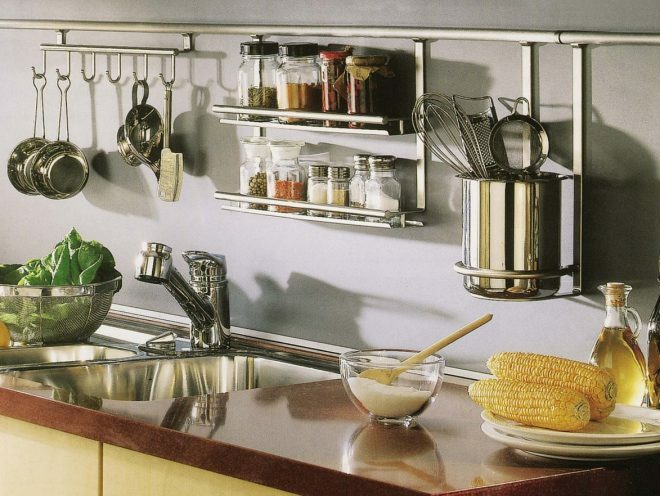
Trays and baskets
With a limited budget and an irrepressible desire to beautifully organize the storage of spices, trays may be suitable. Most often they are made of wood, they look like small low boxes with high sides that protect food from falling. Suitable for storing jars and bags. Extremely practical, they can be stored in an open place or put away in a closet - thanks to their convenient shape, they can fit anywhere and do not take up much space. These trays simply but tastefully decorate the kitchen. A similar solution can be baskets. Unlike trays that can be used to decorate a minimalistic kitchen, baskets are suitable for eco-style.

Organizer pockets
Practical and simple, as well as a budget solution for any kitchen. They do not take up much space and are convenient to use. To make them also serve as decoration, choose soft materials for packaging.
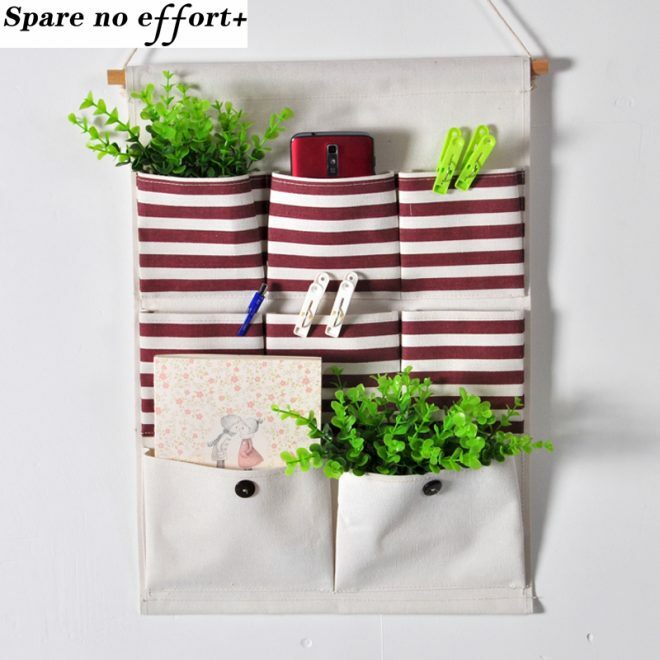
How do they look? These are bags or packages made of thick fabric and film. They can be hooked onto any surface - walls, shelves, doors. Practicality also lies in the fact that such pockets can be washed and put away in the right place.
How to make a wooden shelf with your own hands?
If you decide to install your own handmade wooden spice structure, follow our recommendations.

- Materials - wood, chipboard or drywall.
- Initially, you need to choose a location for a wooden shelf, think over its design and shape. To prevent spices from falling off, arrange borders on the sides of the shelf.
- Have you decided on the dimensions? Cut out parts of the future shelf with a jigsaw, grind the ends.
- Before direct fastening, mark out the fasteners.
- In the absence of space on the walls, you can easily organize the shelves on the cabinet doors - from the outside or inside.
- Be sure to sand the surface of the shelf.
Video: do-it-yourself shelves, stands for spices and seasonings made of wood in the kitchen
That's all there is to know about spice shelves. A wide variety of types, ease of use and the ability to fit into almost any interior make shelves the best choice for storing your spices.
average rating 0 / 5. Number of ratings: 0
No ratings yet. Be the first to rate.


